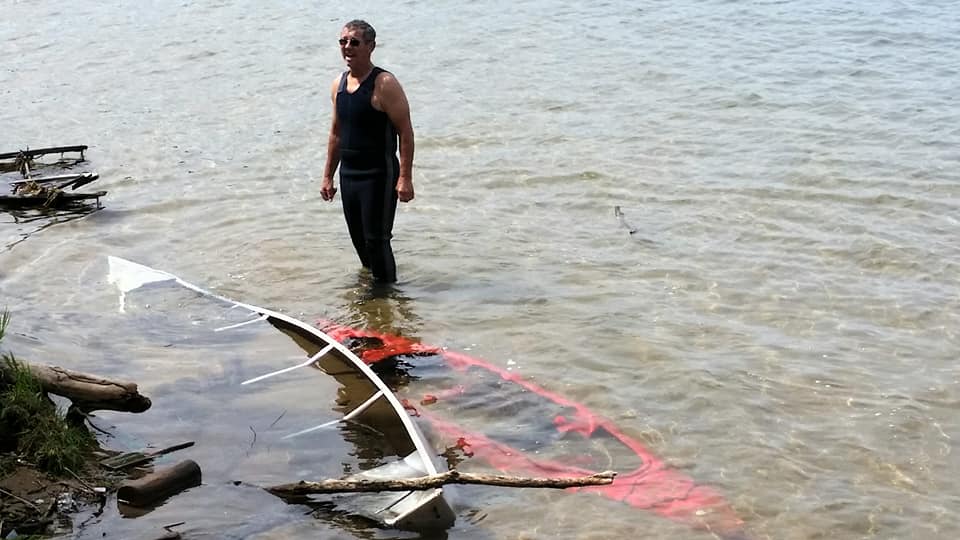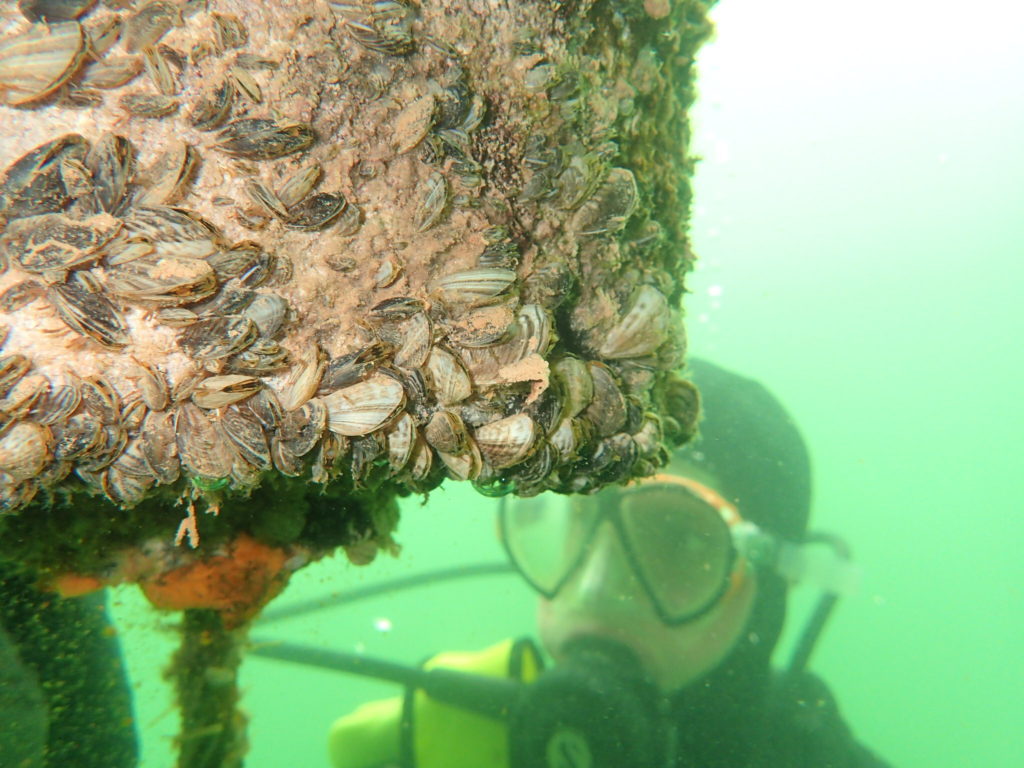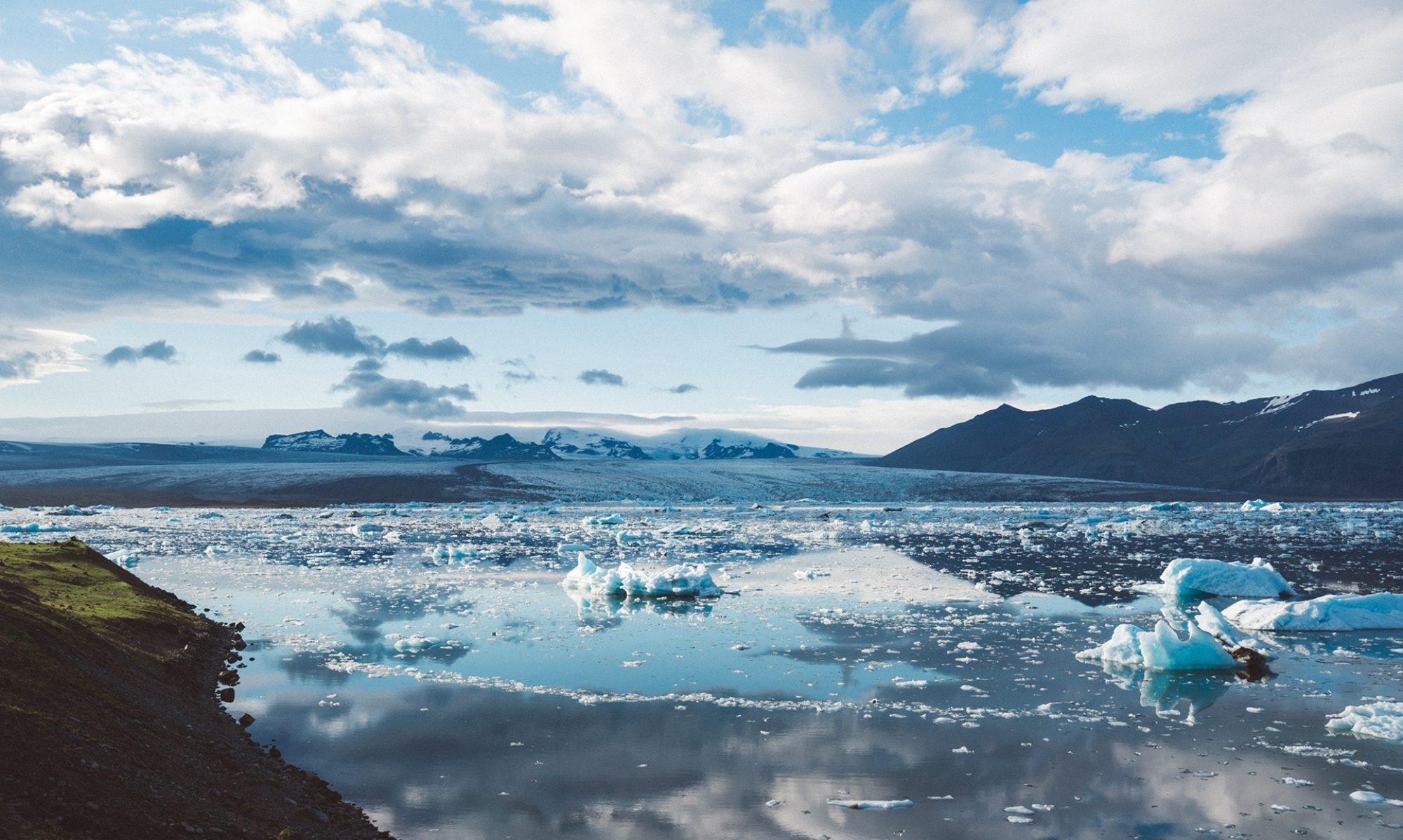On Lake Ontario, a Spring No One Will Forget
By Laura DeMott
The spring of 2017 was a wet one for the state of New York, and one that will go down in history for many people living along the shore of Lake Ontario. Record-breaking amounts of rain combined with some of the highest lake water levels in decades resulted in massive floods along the entire lake shoreline, and downstream into the St. Lawrence River area.
The floods not only filled everything with water, but the huge volumes of water racing downstream triggered incredible amounts of erosion along the shorelines, causing millions of dollars’ worth of damage that some residents are still dealing with one year later.
Mike Corbett has lived his entire life on the shores of Lake Ontario. The retired Watertown firefighter has owned a lakefront cabin near Sackets Harbor since 1982, and last year’s flooding caused significant damage to the shore in front of his home.
“That slope is now a cliff of dirt that is being worked on as we speak,” Corbett said. The restoration project has taken a long time because of the high demand from property owners for skilled labor along the entire eastern shore of Lake Ontario. Corbett explained that along the lake, homes fell into the water, buildings flooded, and income for businesses that rely on the lake, such as tackle shops and boat rentals, was severely affected.

Shoreline Erosion Not New – But Is It Worse?
It’s not the first time flooding and shoreline erosion have been a problem for lakeshore residents. Shoreline erosion was common in the 1940s and 1950s, when water levels in the lake were high. At that time, Corbett said, residents used just about anything they could to shore up their property, including old appliances, barrels, and concrete blocks. “They did it the wrong way,” said Corbett, who once found a 55-gallon metal drum exposed on his property. Corbett also remembers a significant flood in 1989, when he lost some of his shoreline and beach.
Erosion is a natural process in which flowing water removes loose sand and gravel along lake shores. It’s part of what creates beaches, and sometimes sculpts fascinating landscapes of peaks and chimneys, such as the cliffs at Chimney Bluffs State Park. Flooding is also a natural phenomenon. But the flooding and subsequent erosion of 2017 may not be due to natural variability. Rather, these extreme events may be a result of a changing and warming global climate.
The effects of climate change on the Great Lakes region are complicated. People who live on the coast of the Atlantic Ocean, for instance, know what to expect — steady rise of sea level as the oceans warm and glaciers melt. But for people living on the Great Lakes, the future isn’t so clear. Models predict that climate change will increase temperature and alter rainfall patterns across the Great Lakes region, with an increase in winter rainfall of up to 30 percent in the most extreme scenarios. More rainfall may mean higher lake levels, and the possibility of future extreme floods like the one in 2017.

Floods Aren’t the Only Problem
Climate change will probably have additional effects on Lake Ontario, particularly on the animals that live there. However, whether these effects prove positive or negative depends on the species in question. Recent research by the Great Lakes Environmental Research Laboratory, a division of the National Oceanic and Atmospheric Administration (NOAA), showed that while potential changes to the Great Lakes might create optimal conditions for fish populations to thrive, other impacts, such as increased algal blooms and equally thriving invasive species, could be more damaging.
Stacy Furgal, an environmental scientist, said that climate change is likely to exacerbate the problem of invasive species. Furgal is a graduate student at the State University of New York (SUNY) College of Environmental Science and Forestry in the She studies fish populations in Lake Ontario, where her research suggests invasive species are a major problem.
The worst invader in the lake is Dreissena rostriformis bugensis, also known as the quagga mussel. Quaggas, and their relatives, zebra mussels, were introduced to the Great Lakes region in 1989, and quickly found a welcoming home. Collectively known as dreissenid mussels, the zebra and quagga mussels are filter feeders, meaning that they suck water in through a feeding tube, or siphon, and filter out small organisms and nutrients from the water. A side effect of this filtering is that lake water becomes clearer, which may seem nice to divers and fishermen, but is harmful to the lake.

“People like the clearer water, but in actuality you have less of the good bits,” said Furgal. The “good bits” include small floating creatures known as phytoplankton, which use sunlight to feed themselves, and serve as the base of the food chain in many lakes. These phytoplankton, and important nutrients like nitrogen and phosphorus, become trapped by the mussels and starve the fish who also rely on them for food. The mussels also cover the bottom of the lake, and in some areas, can fill in important spaces between rocks where fish eggs collect.
The increased clarity of the water also leads to an increase in the amount of light that can penetrate the water. This causes water plants to thrive, which can create problems for tourism and boat traffic. Corbett, the retired firefighter, has also noticed changes in water clarity, both in terms of increased “water weeds” in front of his home, and in visibility while diving in the lake. “In the ‘70s, you could see ten, maybe 15 feet around you,” Corbett said. “But now visibility is 35 feet or more. They did a filter job you wouldn’t believe.”
Corbett has also noticed another new problem in the region — algal blooms. Harmful algal blooms, or HABs, are large overgrowths of tiny photosynthetic organisms, collectively known as algae, found in bodies of water. Some species of algae produce toxins that can be harmful to humans and other animals. Large algae blooms also use up a lot of the oxygen dissolved in the water, leading to a condition known as anoxia, which can be harmful to animals that breathe the lake water like fish or amphibians. Last fall, Lake Erie experienced a huge, 700 square-mile algae bloom, and the number and extent of these blooms have increased dramatically since the 2000s.
Furgal said these blooms are primarily occurring in Lake Erie due to high levels of nutrients coming into the lake. “Lake Ontario is not overly plagued by algal blooms,” Furgal said, in large part because efforts were made in the 1970s to decrease the phosphorus input into the lake. Furgal said that in the ‘70s, phosphorus measured 24 micrograms per liter, but currently is down to about six micrograms per liter. However, Furgal added, algal blooms could be a larger problem in Lake Ontario in the future because of climate change. Increased rainfall leads to increased runoff from the land, and this runoff brings nutrients like phosphorus and nitrogen into the lake. Combining increased runoff with warmer water temperatures creates a recipe for growing algae, and shallow, near-shore zones of the lake could begin to see more harmful blooms.
Managing Future Problems
The uncertainty around the effects of a changing climate on the Great Lakes region requires further study. But what is more important is that it requires the government and lake management authorities to be prepared for extreme scenarios. When asked whether he worries about his property being affected by future events, Corbett said it’s more of a water management problem than a climate one.
Lake Ontario inflows are controlled by the International Joint Commission (IJC), a cooperative agreement between Canada and the United States with the mission of managing shared water resources. The IJC operates the Moses-Saunders dam, which releases water out of Lake Ontario into the St. Lawrence River, controlling lake water levels. Corbett said the levels were allowed to get too high in 2017, and when the IJC keeps too much water in the lake, winds from the southwest can do a lot of damage to the shore.
Furgal said it’s a bit more complicated. While she agrees that the IJC may have waited too long to release flows at the dam, she said that storm of snowmelt combined with excessive precipitation” created a historic flood event that not even perfect management practices would have prevented. “There’s just so much you can do when there’s that much excess water in the system,” Furgal said. However, she agreed that proper management practices are critical for protecting the future of Lake Ontario. Recent governmental cuts to the United States Geological Survey and Environmental Protection Agency budgets regarding climate change research may limit scientists’ ability to keep up with changing lake environments, which Furgal sees as a more pressing concern.
In the meantime, homeowners like Mike Corbett aren’t too worried about the possible effects of climate change on the lake and the wildlife. Until drastic events become an annual occurrence, or the fisheries disappear, he said, he plans to keep enjoying life on the lake. After all, he added, “All the frogs still have four legs.”
